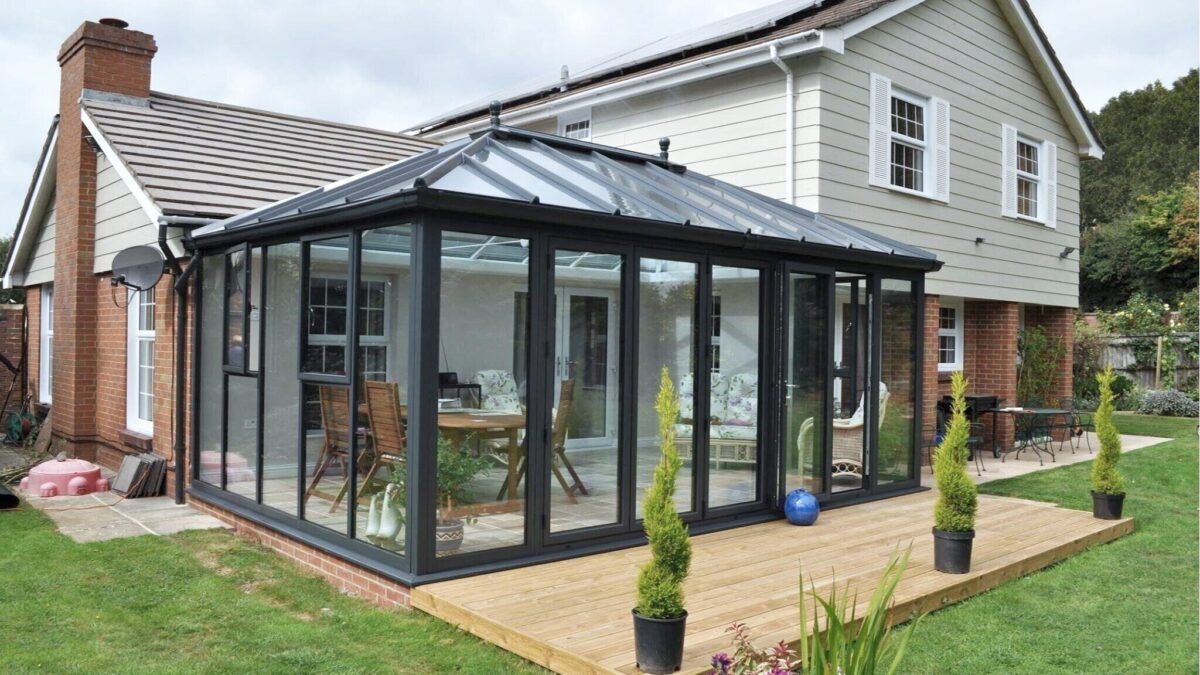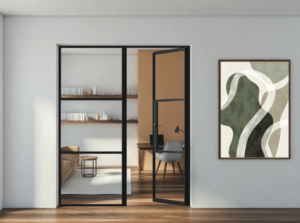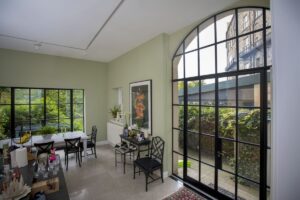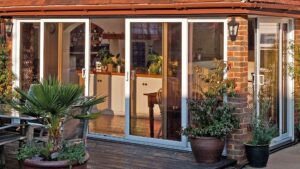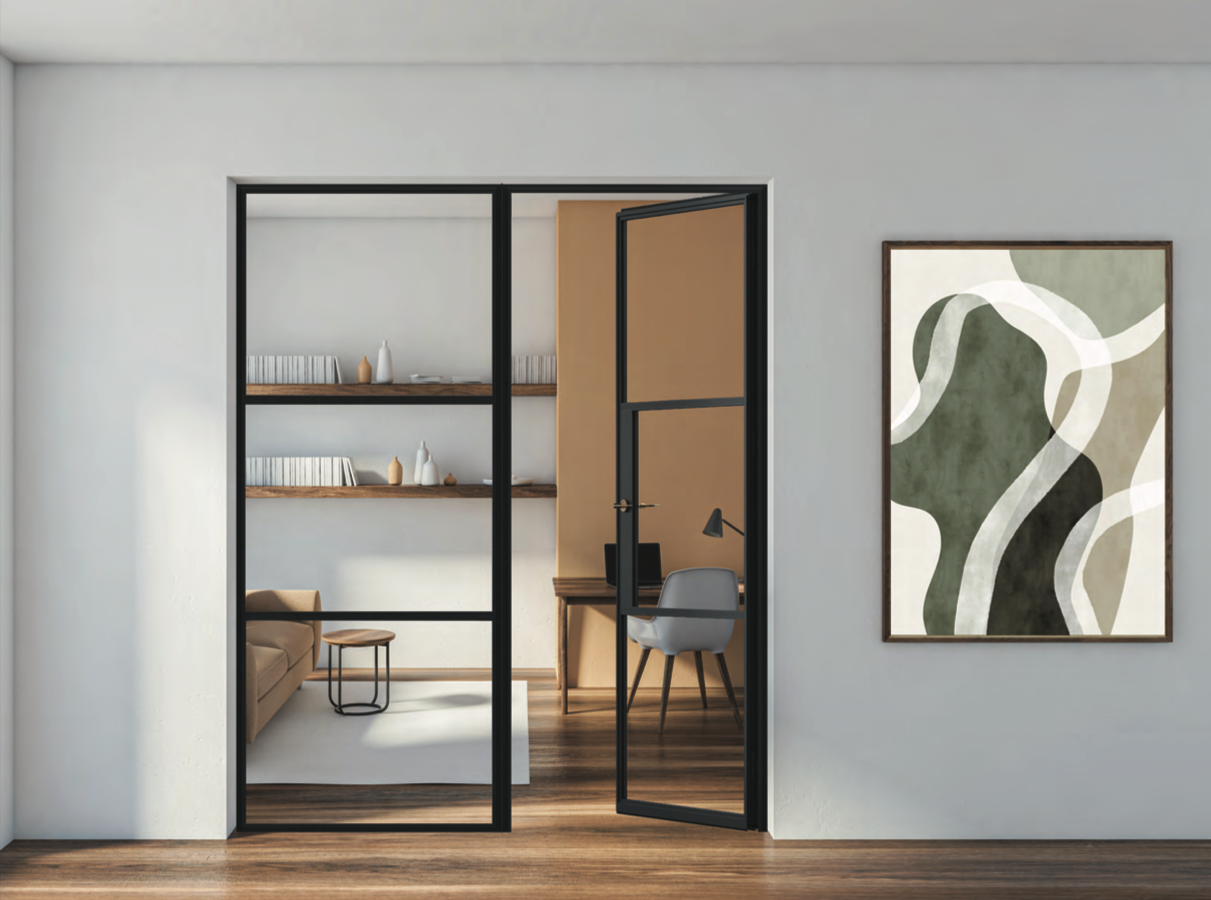A conservatory can give you the extra living space you crave, provide a seamless transition from inside the home to your garden or create a year-round sanctuary.
It is also a significant purchase, which you should research before buying.
Here are a few tips on what to look for when buying a conservatory. We’ve also answered some of your most frequently asked questions to help you find the best fit.
How long do conservatories last?
Many people want to know if conservatories are a good investment. One of the factors to consider is the lifespan of your conservatory.
Any reputable glazing company will offer you at least a ten-year guarantee on a new conservatory. Any less than that, and you should go elsewhere.
A uPVC conservatory from Manchester Window Factory lasts around 25 years due to expert installation and modern materials.
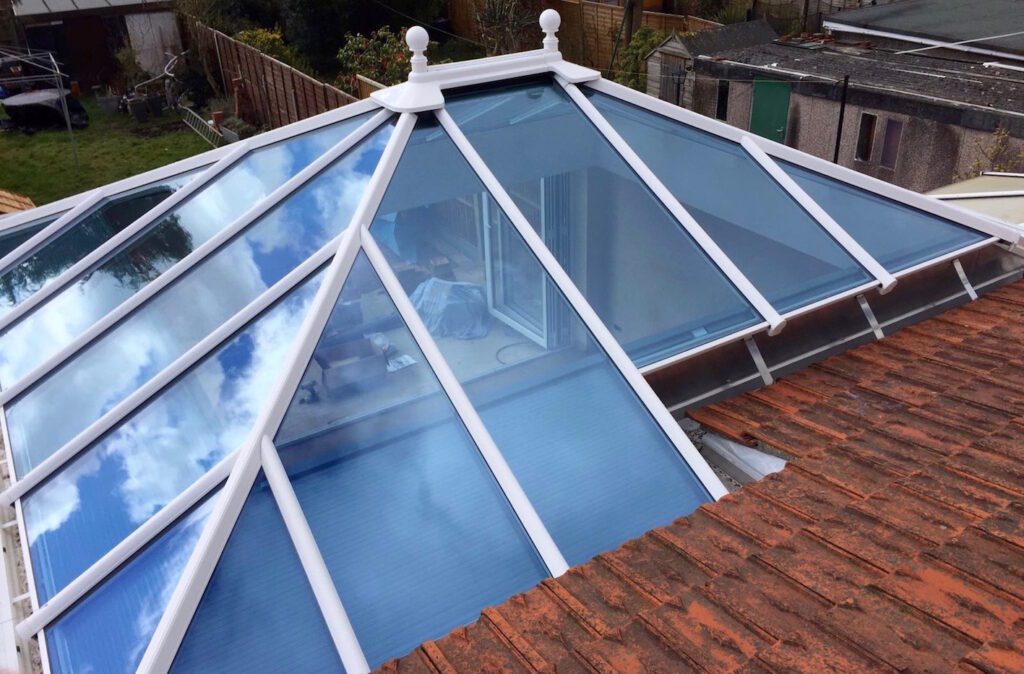
How much does a typical conservatory cost?
The size, shape, materials used, location, and style of a conservatory will all affect how much it costs. However, the average price for a fully fitted UK conservatory in 2023 is between £10,000 and £17,000.
Why are conservatories so cold?
Historically, many conservatories were too hot in the summer and too cold in the winter. Modern technologies have vastly improved, but if you are still having problems, it could be one of these issues.
The roof – Old-style conservatories often featured entirely glass roofs, usually single-glazed. If your conservatory is cold, think about a replacement. Polycarbonate roofs can help you to regulate the temperature of the room. Alternatively, you can replace the glass with thermally-efficient glazing.
Poor insulation – Your walls, windows, doors and conservatory ceiling/roof should be insulated.
Ventilation – Improve airflow by adding vents into your windows and roof to stop draughts and condensation.
Single-glazing – If your conservatory still has single-glazing, heat will likely escape, creating a cold environment. You can upgrade your conservatory to double or even triple-glazing to solve this problem.
If your conservatory is still cold, install under-floor heating or a hung or free-standing radiator.
If your conservatory still has single-glazing, heat will likely escape, creating a cold environment. You can upgrade your conservatory to double or even triple-glazing to solve this problem.
How warm are modern conservatories
Modern conservatories such as ours offer excellent temperature control, keeping you warm in the winter and cool in the summer. This means they can be used all year round.

How well-insulated are conservatories
While glass and polycarbonate are not the best insulators, contemporary conservatories incorporate modern technology to ensure maximum insulation without compromising airflow.
The different types of conservatories?
Lean-to Conservatory
One of the most popular types of conservatories, a lean-to conservatory is connected to the rear of your property, using an existing wall and adding a glass, tiled, or polycarbonate roof. Because the lean-to uses an existing wall, it is one of the most cost-effective conservatories and extension options.
Victorian Conservatory
Those living in a period property may want something more classic in appearance. The Victorian conservatory features a traditional design with an attractive bay front and pitched roof, flooding the space with lots of lovely natural light. You can customise your Victorian conservatory with decorative finials and cresting to match the look of neighbouring properties.
L Shaped Conservatory
Also known as a corner infill conservatory, an L-shaped conservatory makes excellent use of an existing space, such as the gap left by an extension or garage, creating useable living space and potentially adding value to your property.
T-Shaped Conservatory
As its name suggests, this conservatory forms a T-shape with three front-facing sides and a central projection into your garden or yard. This is a larger style of conservatory, so best suited to those with big gardens or outdoor spaces.
P- Shaped Conservatory
Perfect for larger properties and detached homes, the P-shaped conservatory is a lean-to and Victorian hybrid, with three or five sides, depending on the size of your home. You can choose from a glass, polycarbonate or tiled roof.
Edwardian Conservatory
Perhaps the most elegant design, Edwardian conservatories are typically square or rectangular, offering maximum floor space. Built with large glass panels, and clean lines, they are bright and airy rooms with plenty of natural light. Suitable for modern or period properties, the Edwardian is also flexible for roofing. Due to the simple shape, you can have a glass or polycarbonate roof, a tiled roof, or a hybrid customised to your specifications.
Gable-End Conservatory
Another type of conservatory that looks great with period homes is the gable-end conservatory. With an upright roof similar to a house, the gable-end style offers extra height and an old-orangery-style grandeur.
These are just the most popular types of basic shapes. You can also work with our expert team to create the bespoke conservatory of your dreams.
What size conservatory is recommended?
Conservatories come in various shapes and sizes, but choosing one that is too small is a common problem.
Although a smaller conservatory can be cheaper initially, if your conservatory is too small, you may use it less, and it is in danger of becoming an expensive junk room.
When planning the size of your conservatory, first, consider the space you have available and the location of the building.
Second, look at your budget. A smaller conservatory will usually cost less.
Factor in the effect, if any, building a conservatory will have on your neighbours.
Next, consider the proposed function of the conservatory – is it a playroom? A second living room? An extension to the garden? This will help determine what size is best.
Finally, look at your existing furniture to see what will fit your designated space and how it will work for you. Think carefully about the positioning of furniture and electrical sockets, etc.
What are the four main door types for conservatories?
The four main types of doors for conservatories are:
Patio – Many people opt for patio doors for the conservatory to create a smooth passage between the home and the garden.
French – Add a touch of elegance to your conservatory with secure and sophisticated French doors.
Bi-fold – Bi-fold doors are great in places where space is at a premium, as they slide back on themselves, taking up less room.
Single doors – If you have a small space where traditional conservatory doors don’t work, a simple single door could be the answer to securing your conservatory.
We offer a wide range of internal and external doors suitable for your conservatory and home.
Why are some blinds not suitable for conservatories?
Most blinds are best suited to a uPVC conservatory, so a timber or aluminium frame may offer fewer options. Even with a uPVC conservatory, traditional blinds may not be the best fit.
Traditional blinds can fade with sun damage, the pulleys can be dangerous for pets and small children, and it can be difficult to get them to fit unusually shaped or sized windows.
Internal blinds offer a solution to all these issues and more by being integrated into the glass.
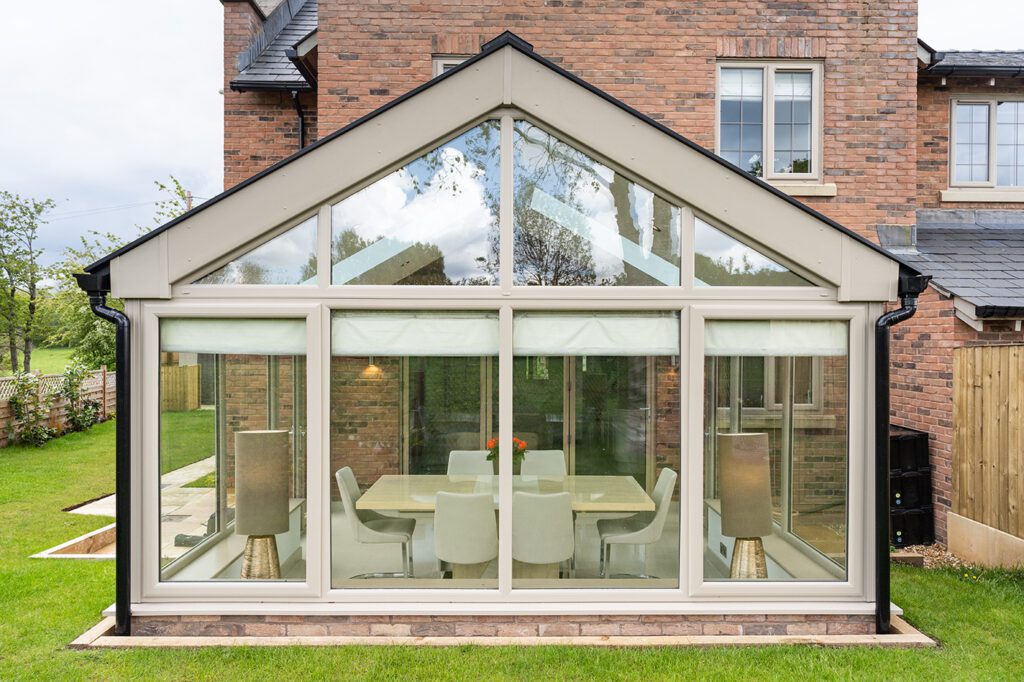
When did building regulations come into force for conservatories?
In 2008, new legislation decried that a conservatory falls under permitted development rights and does not usually require planning permission. There are exceptions to this rule, including:
- When the conservatory is over 30 metres square
- When it is not separated by an external wall, windows, or doors
- If attached to a listed building
- In a conservation area
Why are conservatories bad for the environment?
As the climate crisis continues and temperatures rise to record highs in the UK, climate groups have warned that there is a risk of homes overheating due to the size of the windows in conservatories and patio doors. Regulations introduced last summer look to limit heavily glazed buildings connected to the main property and heated.
This means you should think carefully about how and where you build your conservatory, the materials used and their energy efficiency rating.
All our windows, doors and conservatories come with A ratings, so you have the peace of mind of energy-efficient products.
Request a brochure
To request a free brochure, please call us on 0161 976 4739 or email [email protected].
Alternatively, fill in our online quote form for a free, no-obligation quote, and we’ll get back to you asap.
We look forward to hearing from you.

